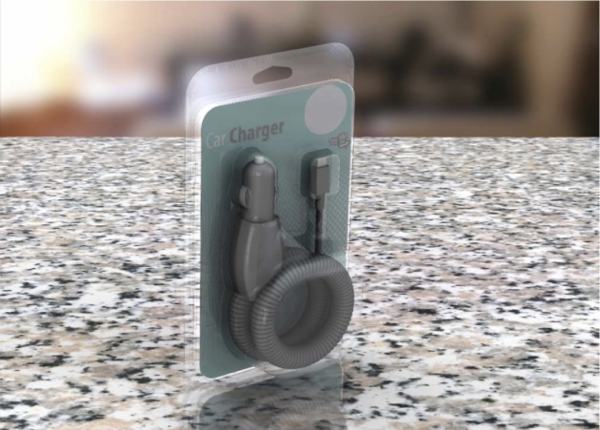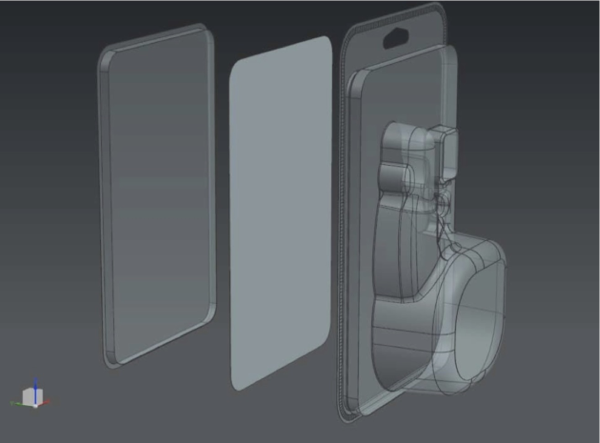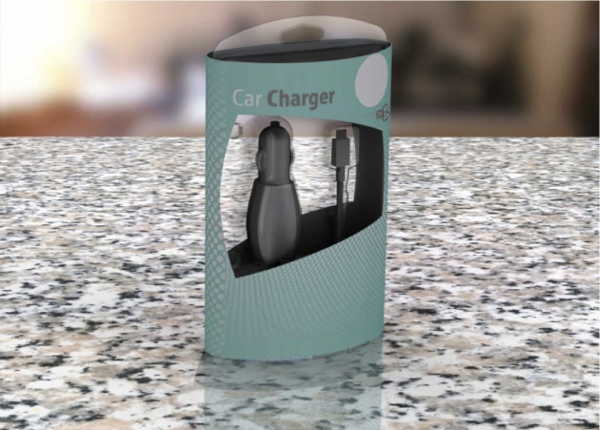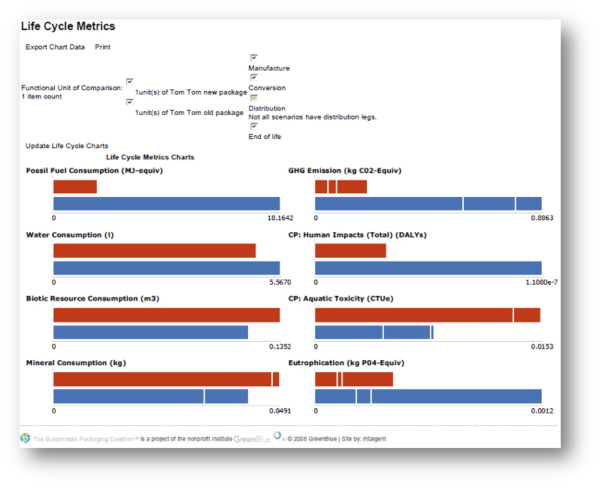Hellllllo world!
How about this weather, eh?!? Chicago is practically underwater, and a lightening bolt literally hit a friend's house yesterday and set it ON FIRE (everyone is okay). Let's hope April showers bring May flowers?
Do you know Sustainable Brands? It is a “learning, collaboration, and commerce community of over 50,000 sustainable business leaders from around the globe.” Producing conferences and thought leadership content, Sustainable Brands looks to equip its communities with the tools to “profitably innovate for sustainability.” One such tool, beginning in May, is a special editorial edition focusing on sustainable packaging; in compiling the content for this resource, designers, innovators, packagers, etc. were called upon by SB to submit their packaging stories, case studies, and articles on sustainable packaging for consideration in the publication. The deadline for submissions was yesterday, and various topics, like integrating sustainability into a design department or state of the art methods for sustainable packaging design, were provided. Click here for more information about SB's sustainable packaging feature.
When this opportunity was brought to my attention I was pumped—I rarely engage in dialogue about sustainable packaging with those outside the packaging and sustainable packaging industries. In other words, brand owners, brand managers, business leaders, innovators, etc., to whom Sustainable Brands develops its content, aren’t usually the ones roaming the aisles at Pack Expo; they aren’t usually sourcing the packaging, nor are they working with the packaging engineers to design sustainable packaging. Consequently, I jumped at the idea of sharing Dordan’s sustainable packaging stories and case studies with this audience, as it provides a direct line of communication with those who can drive real top-down sustainable packaging innovation in their respected industry verticals. Sooooooooo check out our submissions below! Fingers crossed!
Submission for Sustainable Brand’s special issue on sustainable packaging
Dordan Manufacturing Co. Inc.
Topic of focus: How user-centric design might improve both customer experience and supply chain efficiency by designing more sustainable product systems
One of the most contentious hot spots when it comes to clamshell packaging is the social phenomenon commonly referred to as “wrap rage.” While thermoform manufacturers are rarely responsible for actually sealing the package, they are often targeted by consumers as the perpetrators in this battle over their convenience.
There are several technologies for sealing clamshells—RF sealing, ultra sonic, and UV glue—that require additional machinery, personnel, warehouseing, etc. Sealing a product in a package i.e. “kitting,” “assembly,” “fulfillment,” is a typical step in the supply chain process for bringing product to market.
Armed with these insights, Dordan developed two innovative packaging concepts for a potential client that allowed for the elimination of secondary sealing processes while simultaneously optimizing consumer convenience. Sound too good to be true? A description of these concepts will make clear how consumer experience and sustainable production systems are at the core of these sophisticated retail packaging concepts developed by Dordan Manufacturing.
Package design case study objective: Protect and display wireless accessories at retail while maintaining brand identity; consideration should be given to sustainable production systems and recycled materials.
The first packaging concept Dordan developed consists of two RPET thermoformed trays that snap together to imitate an RF seal and a graphics card; the second concept includes an RPET thermoformed clamshell with button-snaps and a clear-fold printed plastic sleeve. All plastic components used in both packaging concepts incorporate post consumer / industrial plastics, percentage TBD. Additionally, all packaging components used in both concepts are recyclable as per FTC Green Guides’ definition of “recyclable” (60% of American communities have access to facilities that recycle RPET thermoforms and SBS insert cards). At the end of life, consumers simply separate the plastic from the paper and recycle; no glues or laminates are present to contaminate or compromise the recycling stream.
What really makes Dordan’s packaging concepts unique, however, is the elimination of the need for secondary sealing via the incorporation of savvy design elements: be it the trays that simply snap together or the clamshell with button-snaps, each concept employs pilferage reducing tactics while eliminating the need to add a secondary seal. In eliminating this step, machinery—including the energy to power it and the waste resulting therefrom (air and water discharges)—is eliminated; kitting personnel is reduced; and, warehousing space saved. Assembly times are optimized and complications resulting from weak seals during distribution and/or at the point of sale are abolished.
In conclusion, Dordan’s packaging concepts update the look of the wireless accessory line packaging while maintaining brand identity and customer loyalty. Both concepts facilitate assembly efficiencies through the elimination of secondary sealing processes and consideration was given to sustainability and consumer convenience.



Submission for Sustainable Brand’s special issue on sustainable packaging
Dordan Manufacturing Co. Inc.
Topic(s) of focus: Integrating sustainability into a design department / Embedding sustainability into design process / State of the art tools for designing sustainable packaging
Dordan has subscribed to two life-cycle based packaging modeling tools, COMPASS and the Walmart Scorecard Packaging Modeling Software, which allows our engineers to make environmentally-motivated, data-driven decisions during the packaging developmental process. Two package design case studies will make clear how these tools inform the sustainable packaging design process at Dordan Manufacturing.
COMPASS case study: Tom Tom package redesign, reduce total packaging for GPS selling unit
Dordan approached this project by redesigning the package to achieve a lower product-to-package ratio. When in the design phase, Tom Tom directed that the plastic content could be significantly reduced by using a 0.015” RPET lid and 0.025” HIPS tray for the GPS unit and incorporating a paperboard carton to house the tray, lid and accessories. Dordan consequently developed a plastic transparent lid and thermoform tray to protect and display the unit at retail that was placed inside a corrugated box during the kitting process.
In order to understand the environmental ramifications of this package redesign, Dordan utilized its subscription to COMPASS, the LCA-based comparative packaging assessment tool developed by the SPC. After imputing the required data into the platform, it was determined that the proposed packaging—when compared with the existing—would reduce the environmental burden of the GPS packaging over its life cycle.
After implementing the package redesign, Tom Tom witnessed a total cost savings of 83%, due primarily to the reduction of plastic used by 88%. It is important to note, however, that there is no silver bullet in discussions of sustainable packaging solutions: in adding a paperboard box, higher biotic and mineral consumption was observed, and aquatic toxicity increased dramatically.
In conclusion, Dordan was able to design a more sustainable packaging solution for GPS manufacturer Tom Tom through its utilization of packaging assessment software COMPASS at the forefront of the packaging developmental process. View the COMPASS data output below. Click here to learn more about COMPASS and Dordan's LCA case studies. 
Walmart Scorecard Packaging Modeling Software case study: Go Phone package reduction; reduce total packaging for pay-as-you-go cell phone while maintaining brad identity
Dordan approach: Redesign package to achieve a lower product-to-package ratio; change the clamshell from convex to flat, eliminating the snap-on lid; and, reduce the gauge of the clamshell.
Walmart Packaging Modeling software utilization: In order to demonstrate the environmental savings of the package redesign, Dordan entered the original vs. proposed packaging metrics into the Scorecard platform, which demonstrated a 20% savings in all environmental indicators considered.
Redesign results: 29% cost savings compared to previous package; for the same amount of product sold, reduced the total packaging weight by 25%; reduced C02 emissions by 25%; and, slimmer design allows for more products per pallet and an increased number of units per foot of retail space.
Click here for the before and after pictures and Scorecard results.
In conclusion, through Dordan’s subscription to these life-cycle based packaging assessment tools, our engineers are provided with the third-party data they need to design sustainable packaging at the forefront of the packaging developmental process. Real quantifiable savings—economical and environmental—have resulted from incorporating these sustainable packaging assessment tools into the design phase at Dordan Manufacturing.
